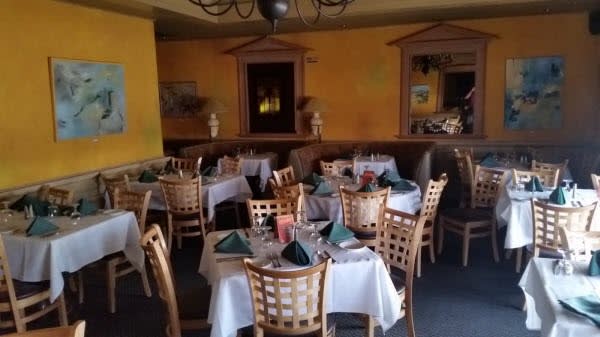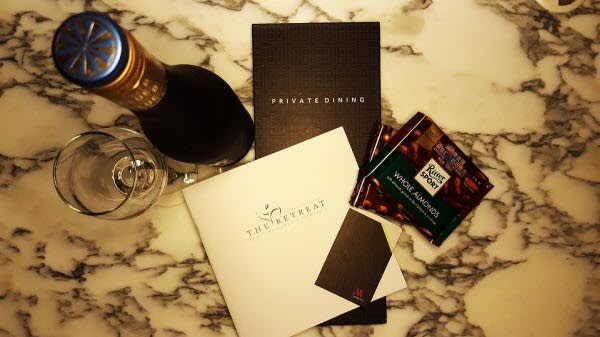While each restaurant is unique, they all share a few characteristics. With a viable restaurant concept, precise attention to detail, quality food, and exceptional service, every restaurant aims to deliver a top-notch dining experience. A fine dining restaurant is held to the same standards with the same expectations. Although fine dining has evolved into an eclectic blend of motifs and cuisines, most aspects of a fine dining restaurant experience still remains the same.
How To Operate A Successful Fine Dining Restaurant

What is a Fine Dining Restaurant?

If you go by the definition alone, the term Fine Dining is a restaurant concept that offers guests the finest in service, atmosphere and food. A fine dining institution brings images of crisp, white table cloths, decorative wood restaurant chairs, waiters in tuxedos, and pricey menu items to many. It is a restaurant that is highly upscale that offers the most sophisticated of services. When creating a fine dining design, it’s crucial to understand the purpose and meaning of this dining establishment. As a general rule, you should settle for a genre first before you design restaurants and other eateries.
There are many types of restaurants – fast food, casual, family, cafes, hipster, bistros and more. Fine dining holds its own separate category. Keep in mind that you may generate a lot of sales operating a fine dining restaurant but you also pay more for food, equipment, utilities, design, restaurant furniture, and staff than you would running a coffee shop or a small American style diner.
Concept of Fine Dining

The concept of space for a fine dining restaurant is open to interpretation. But if you plan to represent and promote your restaurant as a fine establishment, it should be distinctly unique and lavish compared to any other eatery in the area. Design for a fine dining service is naturally formal and expensive in tastes. It’s not limited to frilly napkins, plush restaurant booths, sturdy and covered restaurant wood tables, and grand lighting fixtures. Although those amenities set the mood, many fine dining establishments tend to be rather simple, understated and luxurious in design. The goal is to entice guests with subtle details and a fantastic ambiance that will keep them returning.
Brand identity is irrefutably one of the most important aspects of any restaurant concept, but especially that of fine dining. Since fine dining is exclusive and solely caters to a select patronage, developing the right marketing and branding strategy is essential. You have to think carefully about your identity and restaurant brand if you want your venue to stand out as a fine dining establishment from the rest. Otherwise, your restaurant will turn into “one of many” with nothing special to offer guests and will drive away all potential customers. Researching your competitors and other prosperous restaurant businesses will help you formulate a successful concept.
Basic Seating Layout and Floor Plans
Any restaurant is an ergonomic space at its heart. It requires a blend of efficient physical and psychological care and attention to the design. This delicate composite should be topped off with the utmost practicality. While good customer service and food is an important aspect of the restaurant business, ambiance is another factor that should be considered. Patrons should feel comfortable and enjoy their meals at your restaurant. Regardless of size, type and location, a basic restaurant layout encompasses general areas of the entrance, dining room, kitchen and restroom. Paying close attention to even the smallest details will allow you to produce a positive dining experience which will help your business flourish. As a general rule, a restaurant design should evenly balance a maximum seating capacity and an inviting ambiance that will make customers feel welcomed and relaxed. Below are some useful pointers to help get you started with your fine dining layout:
- Always consider the flow of service of wait staff from the kitchen to the dining room.
- In a similar fashion, take the flow of the dining room to the restrooms into consideration.
- Hostess station and waiting area must be located at the front of the restaurant – ideally in the entrance lobby.
- Front room areas should include a dining room, a bar and a restroom.
Fine dining restaurants come with their own set of requirements. Some establishments may only need a single dining room while others require a private room to accommodate parties. However, the following considerations should be given to a fine dining restaurant design and layout:
- Avoid placing restaurant tables near restrooms.
- Tables should not be placed in the center of the dining hall.
- Don’t place tables near the front door.
- Restaurant tables near the kitchen and bus station can be uncomfortable for diners.
- Use tall plants or elegant dividers to create divisions between tables as you see necessary.
To create the perfect fine dining design, you should draw a comprehensive outline of your restaurant floor plan and examine the potential success and failures of your plan from the perspectives of managers, chefs, kitchen staff, servers, and bartenders. Try to be certain about the final outcome as floor plans are not easy to modify once set.
Setting the Fine Dining Atmosphere

Fine dining has come a long way from being synonymous with stuck-up waiters and French sounding restaurant names as well as highfalutin dishes. Nowadays, fine dining can be any type of setting as well as feature a wide variety of cuisine ranging from local, to organic, and ethnic. Fine china, glassware, flatware, and tablecloths are standard and expected at such a setting.
With evolving dining trends, there is room for flexibility in terms of creating the atmosphere you want. For instance, you can take the traditional route and use rose centerpieces and silver candelabras. Or you opt for a more hip décor with a bold color scheme and modern restaurant furnishings.
Music softly playing in the background should reflect the mood you want to set such as classical for a traditional dining setting or jazz for a modern one. Similarly, lighting should be subtle and dim for a romantic ambiance.
Although, most people don’t regularly visit a fine dining establishment for a quick meal, it is a sought-out location for holiday celebrations and special occasions. Elegant wait staff with impeccable manners, fancy cutlery and delicious meals accompanied with a selection of wines emit a sense of importance among customers and many are willing to pay top dollars for an optimal dining experience. Wealthy clientele, if satisfied by service, can give your fine dining business a seal of success. Customers should leave your restaurant feeling that the money they spent on their meals was worth it.
